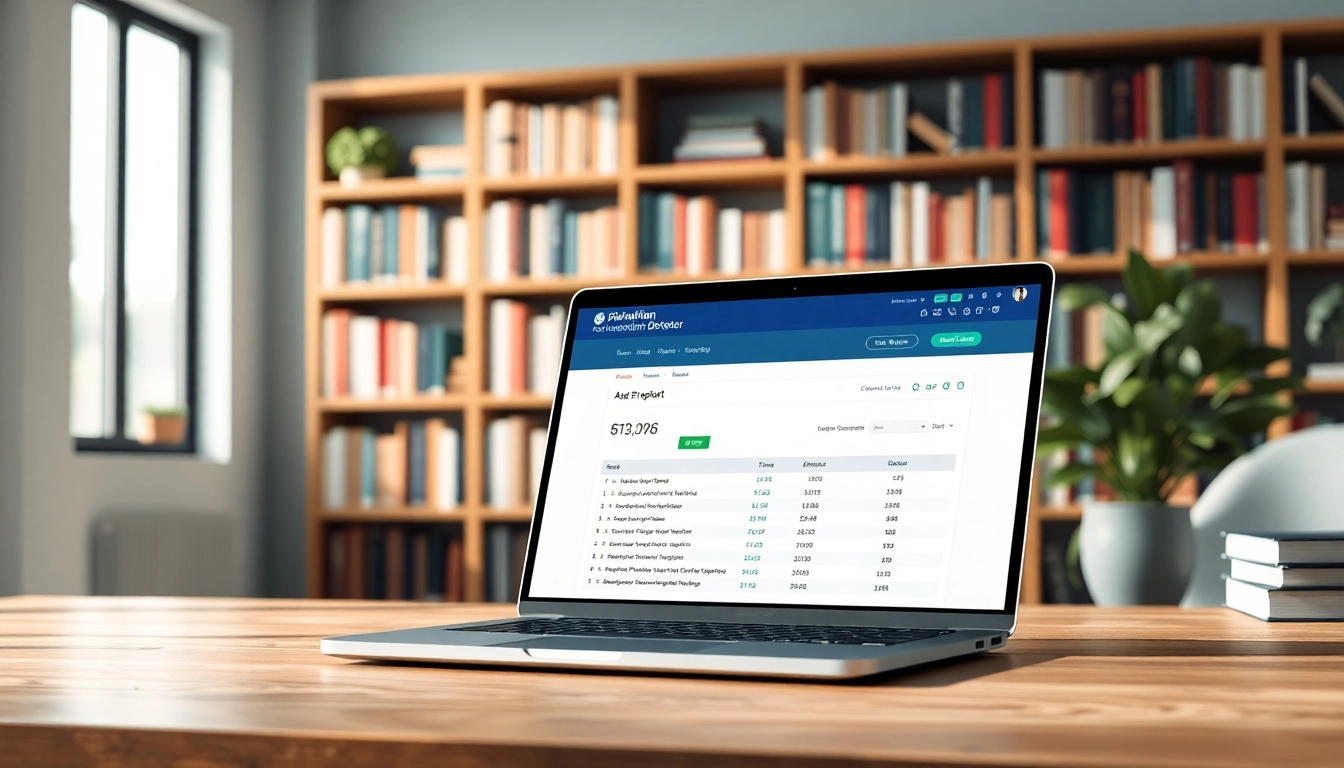Understanding Plagiarism Detectors
What is a Plagiarism Detector?
A plagiarism detector is a tool that identifies instances where text content overlaps with other existing works, determining how much of the submitted work is original. These tools are essential in various fields, particularly academia, where authenticity in written assignments is critical. As the digital landscape expands, the importance of maintaining original content has become paramount. Plagiarism detectors utilize advanced algorithms and databases to compare submitted texts against a vast range of sources, effectively detecting potential violations of intellectual property rights.
How Do Plagiarism Detectors Work?
Plagiarism detectors primarily function through a multi-step process that includes text analysis, comparison, and reporting. When a user uploads a document, the software breaks the content into smaller segments and scans it against an extensive database of published works, articles, websites, and previous submissions. By employing techniques such as fingerprinting, string matching, and semantic analysis, these tools generate a similarity report that highlights matched portions of text. This allows users to see how much of their content is original versus copied, as well as identify the sources from which the flagged text originated.
Types of Plagiarism Detectors Available
Plagiarism detectors can be categorized into several types, each with specific functionalities:
- Web-based Tools: These are online applications where users can directly paste content or upload documents for analysis.
- Desktop Software: Installed on local machines, these applications often provide additional features such as offline scanning and document management.
- Institutional Software: Many educational institutions utilize dedicated software solutions that are integrated with their LMS (Learning Management Systems) to monitor submissions automatically.
- AI-Powered Detectors: These detectors use artificial intelligence to enhance detection accuracy by understanding context, paraphrasing, and detecting similarities beyond straightforward matching.
The Importance of Plagiarism Detection
Academic Integrity and Plagiarism
Plagiarism undermines the very foundation of academic integrity. It not only diminishes the value of education but also erodes trust between educators and students. Institutions emphasize the importance of producing original work and understanding the ethical implications of plagiarism. The use of plagiarism detectors helps instill a culture of honesty and respect for intellectual property, ultimately fostering an environment where creativity and individual thought are valued.
Consequences of Plagiarism
The repercussions of committing plagiarism can be severe. In academic settings, students may face penalties ranging from failing grades on assignments to expulsion from their programs. Beyond academia, allegations of plagiarism can damage professional reputations, lead to financial losses, and even result in legal action. In creative fields, where originality is vital, theft of ideas can stifle innovation and impact career trajectories.
Benefits of Using a Plagiarism Detector
Utilizing a plagiarism detector provides multiple advantages:
- Ensures Originality: Helps writers ensure that their work is unique, reducing the risk of unintentional plagiarism.
- Boosts Credibility: Submitting original work enhances a writer’s reputation and credibility in their respective field.
- Improves Writing Skills: Analyzing reports from plagiarism detectors can help authors recognize over-reliance on source materials, encouraging a stronger grasp of their subjects.
- Saves Time: Automated tools expedite the process of content verification, allowing writers to focus on developing ideas and content, rather than manually checking for plagiarism.
Using a Plagiarism Detector Effectively
Steps to Scan Your Document
Using a plagiarism detector is often a straightforward process, involving the following steps:
- Choose a Reliable Tool: Select a plagiarism detector that suits your needs, such as the plagiarism detector you’re considering.
- Upload or Paste Your Document: Depending on the tool, either upload the file or copy and paste the text into the provided input field.
- Initiate the Scan: Start the scanning process and wait for the software to analyze your document against its databases.
- Review the Report: Once the scan is complete, review the results provided in the report. Look for highlighted sections and percentage matches that indicate areas of concern.
Interpreting Plagiarism Reports
Understanding the results from a plagiarism detector can sometimes be challenging. Reports typically include:
- Percentage Match: An overall percentage that indicates how much of your document matches other sources.
- Highlighted Text: Sections of your work that are flagged for similarity are usually highlighted or marked differently.
- Source Links: Links or references to the original sources where matches were detected, providing context for the flagged content.
When interpreting these reports, it’s essential to consider that not all matches necessarily indicate plagiarism; quotes, common knowledge, and properly cited text may show overlaps. Critical analysis of the feedback will help make informed decisions about revisions and improvements.
Common Pitfalls to Avoid
To maximize the effectiveness of plagiarism detectors, be mindful of these common pitfalls:
- Ignoring Citations: Ensure all quoted and paraphrased material is correctly cited according to the required formatting style.
- Submitting Early Drafts: Always use the final version of your document for scanning; early drafts may contain accidental text mishaps.
- Over-Reliance on the Tool: Recognize that while plagiarism detectors are useful, human judgment is crucial in determining what constitutes plagiarism versus acceptable use of sources.
Advanced Features of Plagiarism Detectors
AI Integration in Detection
Modern plagiarism detectors increasingly utilize artificial intelligence to enhance their capabilities. AI integration allows for more nuanced evaluations of text, as these tools can recognize context, interpret semantic meaning, and differentiate between intentional and unintentional plagiarism. This AI-driven analysis significantly improves detection accuracy, especially when dealing with paraphrased content or complex sentence structures.
Real-Time Feedback and Suggestions
Some advanced plagiarism detectors offer real-time feedback as you write, allowing authors to identify potential issues as they occur. This feature proves valuable in educational environments, as it encourages students to adhere to plagiarism guidelines during the writing process, rather than addressing issues retroactively in a submitted document.
Supported File Formats and Compatibility
When selecting a plagiarism detector, consider the supported file formats as compatibility can vary. Many tools accept formats such as:
- Word Documents (.doc, .docx)
- Plain Text Files (.txt)
The broader the range of compatible formats, the easier it will be to incorporate the tool into your existing workflow.
Choosing the Right Plagiarism Detector
Comparing Top Detectors in the Market
With numerous plagiarism detectors available, selecting the right one can be daunting. Some of the most notable options include:
- Grammarly: Known for its writing assistance tools, Grammarly’s plagiarism checker is highly reliable and integrates seamlessly into its other features.
- Turnitin: Widely used in educational settings, Turnitin offers extensive database access and is known for its thorough analysis.
- Scribbr: This tool emphasizes accuracy, particularly for academic documents, and provides a user-friendly interface.
- Copyleaks: Specialized in detecting plagiarism in multiple languages and across various file formats, Copyleaks is a versatile option.
Cost vs. Features Analysis
When evaluating plagiarism detectors, consider both costs and features. Many tools offer basic functionality for free, but advanced features usually come at a premium. Evaluate whether the additional features justify the subscription fee or if your needs can be met with free options. Factors to consider include the depth of analysis, support services, and ease of use.
User Reviews and Recommendations
Before committing to a plagiarism detector, researching user reviews can provide invaluable insights. Look for detailed feedback regarding their experiences, particularly focusing on reliability, accuracy, customer support, and ease of use. Online forums, educational resources, and social media can be excellent sources for genuine reviews and recommendations.



